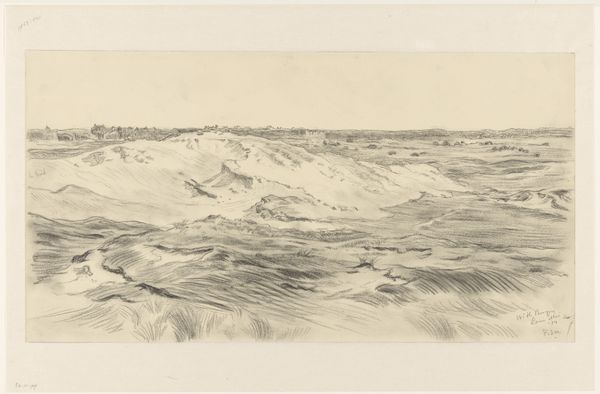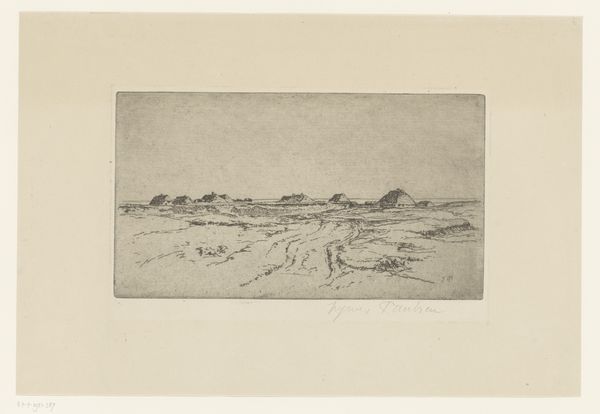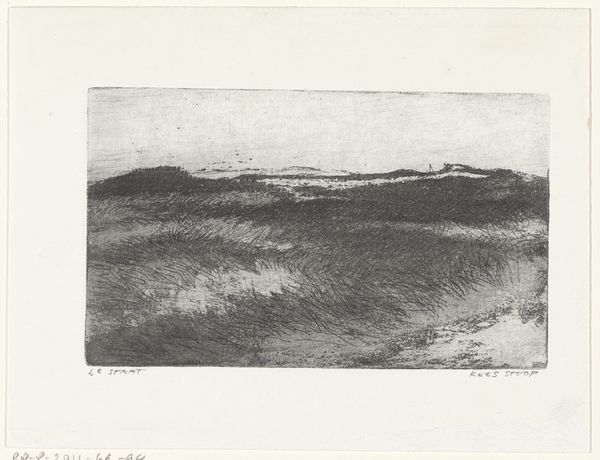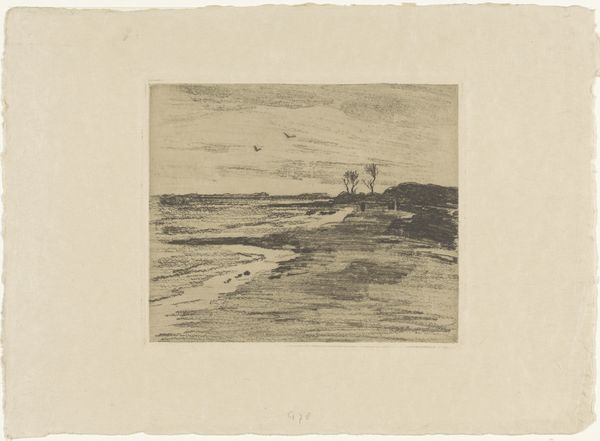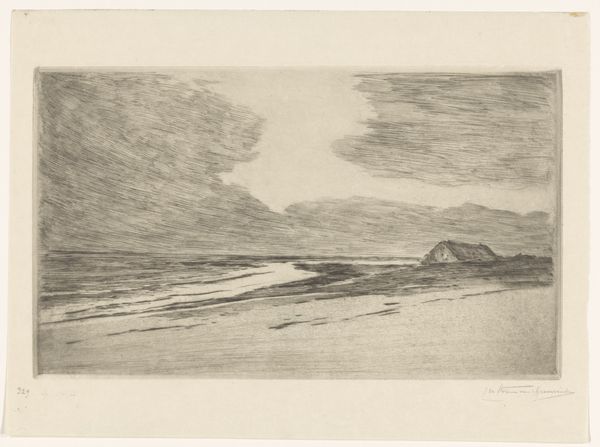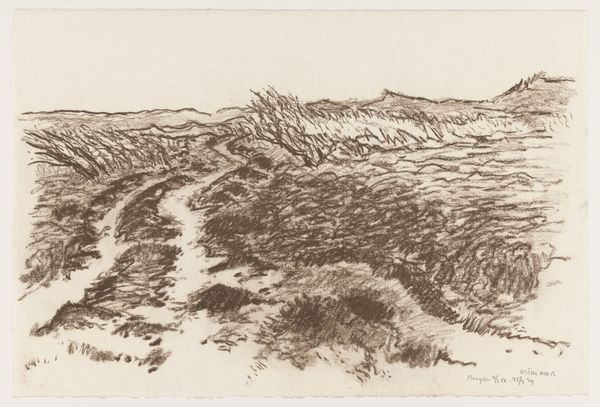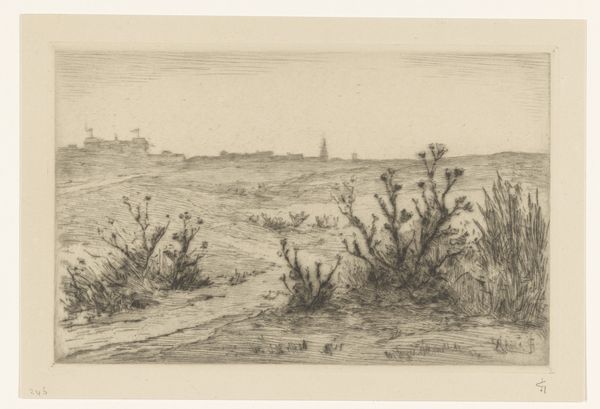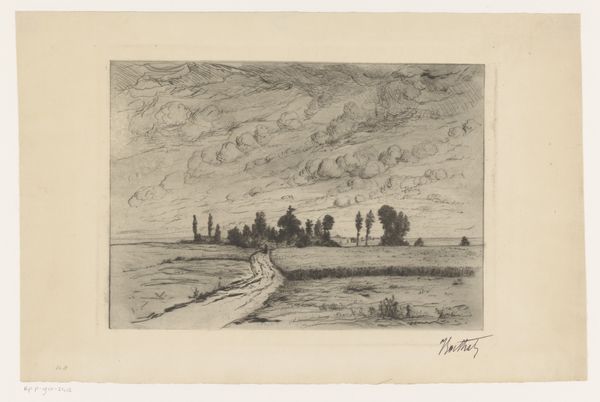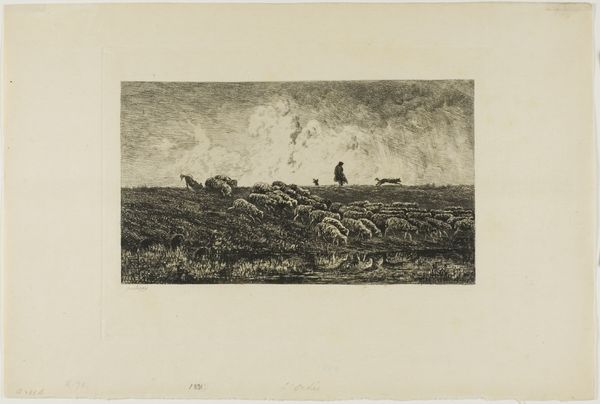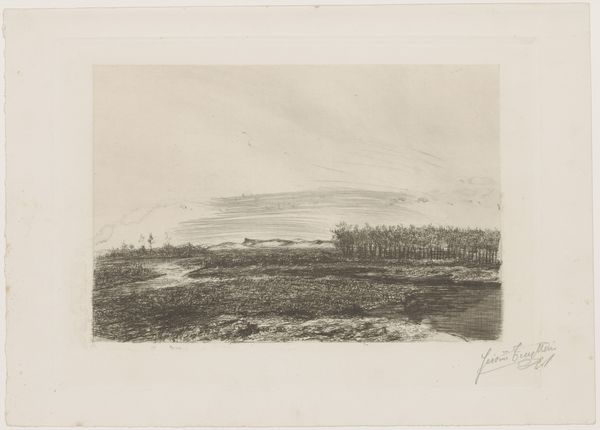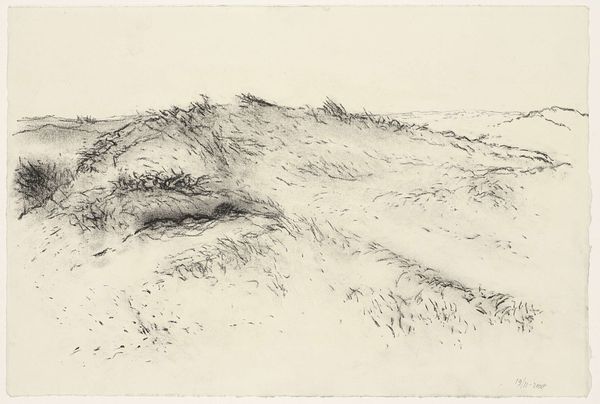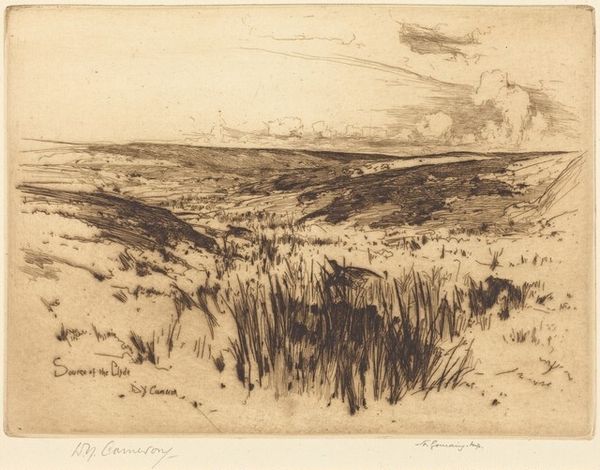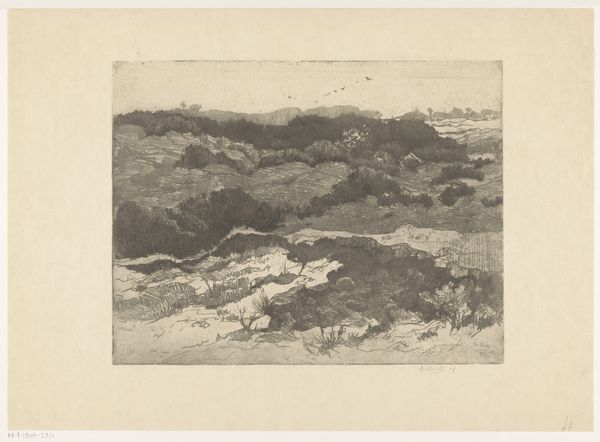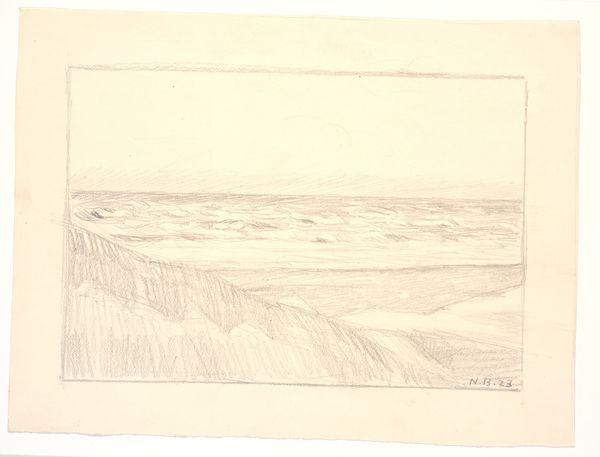
drawing, print, etching, paper
#
drawing
# print
#
etching
#
landscape
#
etching
#
paper
#
pencil drawing
#
united-states
#
realism
Dimensions: 148 × 310 mm (image/plate); 297 × 444 mm (sheet)
Copyright: Public Domain
Editor: Here we have Thomas Moran's etching, "Looking Over the Sand Dunes - Easthampton" from 1880. The detail in this seemingly simple landscape is incredible, creating a very layered and textural scene. What do you notice when you look at this work? Curator: Immediately, the composition arrests my attention. Moran's skillful use of line and tone creates a dynamic interplay between light and shadow. Observe how the foreground is densely marked, contrasting with the subtly rendered horizon line. This division, while creating depth, simultaneously flattens the image, drawing attention to the surface quality. Editor: It almost feels abstract in some areas, even though it's representational. Curator: Precisely. Consider the materiality of the etching itself. The incised lines on the metal plate, transferred to paper, produce a tactile experience. Note how the varying pressures and densities of the lines not only define form but also establish a rhythm across the surface, akin to musical notation. Is it possible that the realism provides a scaffold for abstraction? Editor: That's fascinating. I hadn’t considered that the technique contributes to the overall abstraction. So it’s not just about what's depicted, but also how it's depicted? Curator: Yes. It compels us to question the very nature of representation. Is this image about Easthampton, or about the formal qualities of line, texture, and tone? This visual syntax builds meaning just as explicitly as subject. Editor: I'm starting to appreciate how much the formal elements can speak, independently of the subject matter itself. It's given me a lot to think about. Curator: Indeed. And, hopefully, a sharper eye for your next viewing experience.
Comments
No comments
Be the first to comment and join the conversation on the ultimate creative platform.
